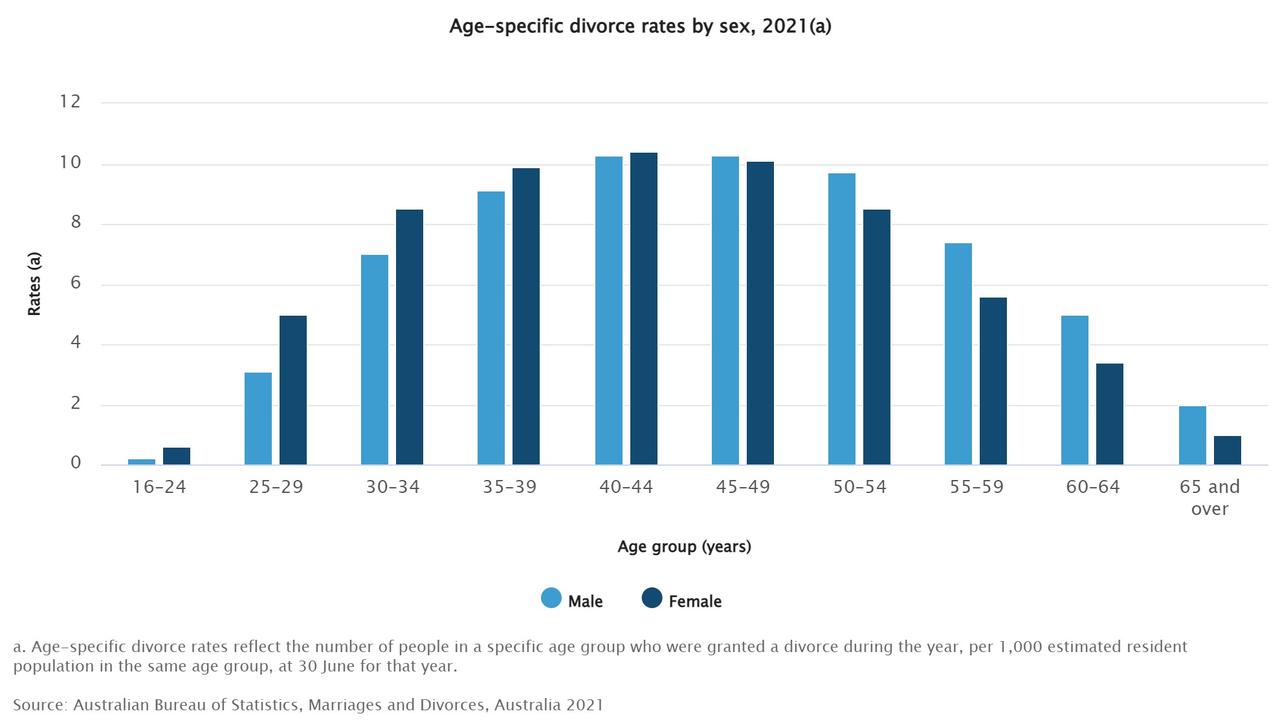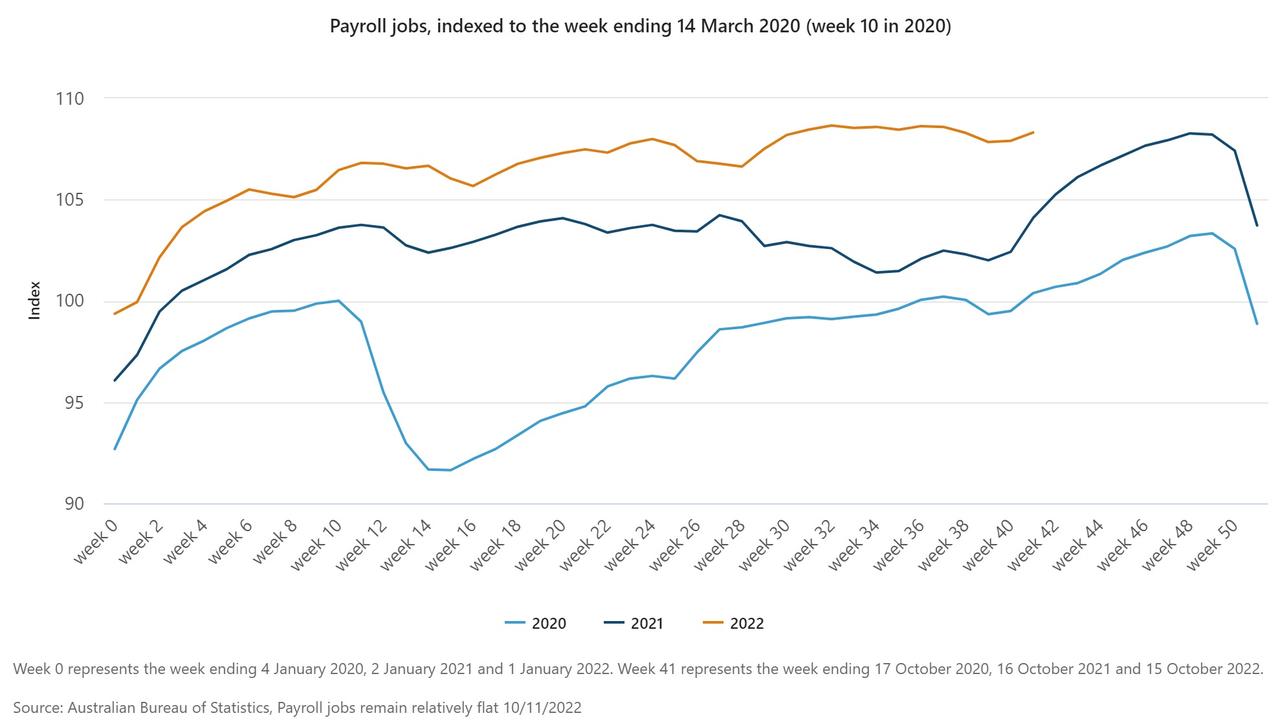ABS reveals how Covid-19 pandemic impacted weddings and divorces last year
Surprising details about how the Covid-19 pandemic impacted weddings and divorces last year has been revealed.

The number of weddings fell well short of pre-pandemic levels for the second consecutive year while the number of divorces skyrocketed, according to data from Australian Bureau of Statistics.
There were 89,164 couples who married last year — up from the record low of 78,989 weddings in 2020 — while 56,244 divorces were granted compared to 49,510 the previous year.
According to the Federal Circuit and Family Court of Australia, the boosted number of divorces overall compared with previous years was partly due to administrative changes that increased finalisations last year.
Most divorces granted last year came from separations before the pandemic, the ABS noted.
The divorce rate is now at a level last recorded in 2011 and 2012.

The median length of marriage was 12.2 years, while 47.8 per cent of the divorces were couples with children aged under 18.
The median age at divorce was 45.9 for males and 43 for females.
Marriage numbers recovered in early 2021 before the Delta wave of Covid-19 interrupted wedding plans, ABS director of health and vital statistics James Eynstone-Hinkins said.
“Marriage numbers in Victoria and NSW were particularly affected from June and July 2021 onwards as public health restrictions were stepped up,” he said in a statement on Thursday.

“As a result, marriage registrations in 2021 were down 34.6 per cent in Victoria and 31.0 per cent in NSW when compared with 2019.
“Marriages in other states and territories were less impacted, with numbers in Queensland, South Australia, Tasmania and Northern Territory almost returning to pre-pandemic levels.”
Public health orders such as lockdowns, density limits on gatherings, mask mandates, and restrictions on singing and dancing impacted marriage plans, the ABS noted.
The median age of males who married last year was 32.1 years, while females were 30.5 years.
More than 80 per cent of marriages registered were administered by civil celebrants.
Meanwhile, there were 2842 same-sex marriages registered and 473 same-sex divorces granted.

Female couples made up almost two-thirds of same-sex marriages (62.3 per cent) and divorces (64.7 per cent).
But the ABS noted same-sex marriages as a proportion of all weddings had decreased every year since their introduction, making up 3.2 per cent last year compared to 5.5 per cent in 2018.
Separate analysis from the ABS on Thursday also revealed the number of payroll jobs in mid-October remained relatively flat to mid-September, down by 0.3 per cent.
“Payroll jobs fell by 0.7 per cent in the second half of September and rose by 0.4 per cent in the first half of October, as people returned to work after the school holidays,” ABS head of labour statistics Bjorn Jarvis said.

“This followed a similar seasonal pattern across September and October in previous years, though closer to 2020 than 2021, given the pronounced recovery from the Delta-related lockdowns late last year.”
Payroll jobs were down in 12 of the 19 industries.
“Accommodation and food services, and education and training, which were particularly affected by school holidays, had the largest share of falls,” Mr Jarvis said.
“Together, they accounted for around 54 per cent of the payroll jobs losses in the month, which was much greater than their usual share of total payroll jobs (around 16 per cent).
“In contrast, retail trade and construction accounted for around 59 per cent of payroll job increases in the month to mid-October, also well above their usual share of jobs (around 16 per cent).”




